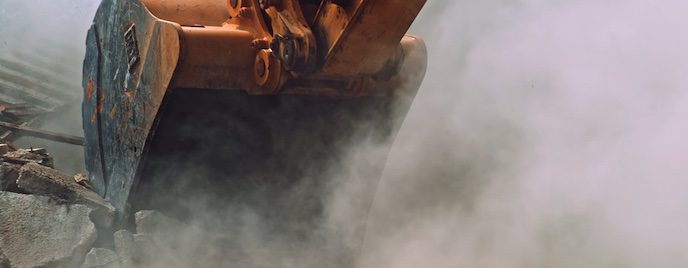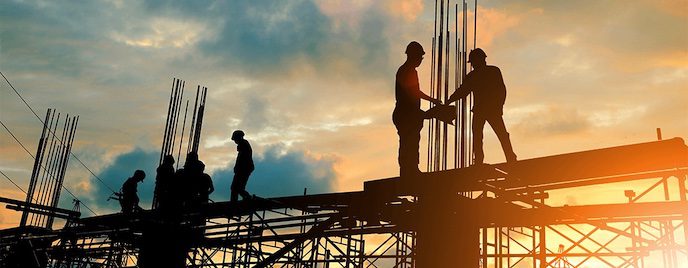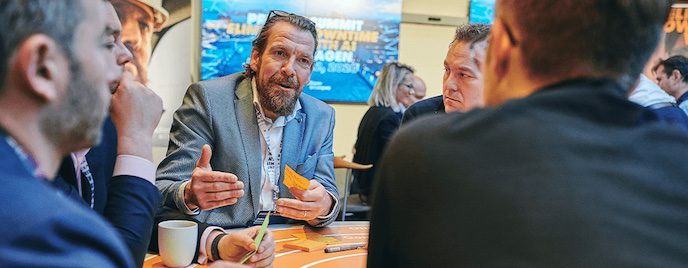

It’s just 12 months since I set pen to paper to outline some of the industry trends I believed were going to be worth monitoring as 2020 unraveled. At the time, the construction industry had just closed what we now know to be a record year for new equipment sales. What’s more, its strong growth curve looked like it was going to continue.
Then events unexpectedly took a turn. Before the end of Q1 2020, we were in the thick of the first wave of coronavirus disease 2019 – or COVID-19. It seemed that suddenly any predictions made for the new year had become irrelevant as we were taken hostage by an event that nobody had either foreseen or taken steps to mitigate against.

In this blog I reflect on what happened last year and how some of those things were important to Trackunit, our customers, and the ecosystem we serve. But firstly, I want to acknowledge the first thing we learned – that there really are some things outside of all our control, no matter how good at business we are. Secondly, I want to convey my hope that you and those closest to you are kept protected from the worst aspects of COVID-19.
Thirdly, something happened during lockdown in 2020. Something we can see clearly through the use of Trackunit solutions. Yes, there are now more users than ever before.
But as importantly, people using the solutions are using them more, and generally it seems that there is an acceleration in the industry’s use of digitalized solutions.
In 2020, I’d speculate that the construction industry reached a tipping point. With many companies now implementing plans to digitize operations, construction is gaining momentum to become a fully-fledged digitally transformed industry, with all the benefits to the ecosystem that this status will provide.
“Nothing travels faster than the speed of light,” said the humorist and author, Douglas Adams, “with the possible exception of bad news, which obeys its own special laws.”
If the spread of coronavirus was staggering, the speed with which people, enterprises, and organizations established solid practices for virtual meetings was more astounding.
Personally, I was amazed at the speed of response. As a business, Trackunit has been working with many companies in the process of digital transformation over the past five years. For whatever reason, many of these projects had been stalled or delayed at one time or another. Now, all of a sudden, barriers to implementation seemed to dissolve as with a single will ‘work from home’ programs were rolled out supported by Zoom, Microsoft Teams and the like to support personal contact throughout company, customer and ecosystem communities.

If you could bottle the motivating force for such a widespread transition in such a short timescale, you’d have a potent resource for your next unicorn. Meantime, I can’t be the only person thinking that with the evident success that this sprint has delivered to businesses big and small, such an approach to technology roll-outs should become a permanent fixture in the new normal.
There is no doubt that people have a tendency to be optimistic in the face of adversity. As the pandemic started to strengthen its grip and show its hand as a long-term problem, at Trackunit we looked for ways to help the industry visualize the challenge it posed. Given that we are not a provider of hand sanitizing gel or Personal Protection Equipment, we set about donating our strengths in data and analytics in a way which we felt would best benefit the industry – to provide factual information about the status of the industry.
The Downtime Index resulted from a collaboration with Trifork – a trusted software provider – together with construction equipment manufacturers and rental companies. Using data ethically gathered from 150,000 off-highway construction vehicles to gauge how many machines were working, and to provide both weekly and year-on-year comparisons, the Downtime Index was made freely available on our own website and via that of our media partner, KHL.
Comparing regional performance over time in the US, Germany, France, UK and 18 other countries, the Index was a resounding success and a project of which our data science team is rightly proud. It goes to illustrate how putting data and information in the public domain can help a whole sector (and other adjacencies) by providing solid and trustworthy business information to help inform business decisions. It shouldn’t take a crisis for this to happen.

In January Predict Summit 2020 took place on the site of the old Carlsberg Brewery in Copenhagen. This area which is undergoing redevelopment is a potent illustration of how integral is to the growth of cities, providing a location where work, rest and play are being intelligently designed with innovation for greater liveability.
Working together with McKinsey and some inspiring keynote speakers, Summit participants were invited to take a fresh look at how we can improve construction, through our supply-chain, CE rentals, on-site machines, people and importantly technology – with a particular focus on the influence of AI.
A group ideation session provided a conducive environment for people to share both their experiences and ideas for advancements. It also gave rise to some great thinking around how AI can enable the industry to better understand and support the human side of construction, holding out the opportunity for construction to further shrug off its reputation for low productivity and efficiency, and regain its lost ground as innovation leaders.
Bringing people together to discuss and overcome the challenges to our industry had a cohering effect.
Being invested together in scenarios that are familiar, if not common to all has helped those present to change the way they see the industry and is a step towards less fragmentation and siloed thinking. A direct result of this collective effort is a White Book – “100 Ways to Eliminate Downtime” – which gathers together diverse approaches from across the industry to increase the efficiency of work sites and construction operations.

In my blog “Eight Trends Affecting the Construction Industry in 2020 and the Coming Decade” published last year, I got excited about the idea of the learning organization. The last sentence of Trend #3 reads “Adaptation will be vital for companies to survive and thrive in the coming years.” OK, I didn’t predict COVID-19, but the need for organizational adaptation has never been more vividly illustrated than it was in 2020.
Peter Senge, the “Strategist of the Century” and the visionary who popularized the learning organization concept said that real learning is at the heart of what it is to be human. He wrote: “…for a ‘learning organization it is not enough to survive. ‘Survival learning’ or what is more often termed ‘adaptive learning’ is important – indeed it is necessary. But for a learning organization, ‘adaptive learning’ must be joined by ‘generative learning’, learning that enhances our capacity to create.”
As I mentioned in Insight #1, technological adaptation has been vital part for survival during 2020. But if organizations are to thrive in the new normal, they will depend on generative learning so that participants in learning organizations can add new ideas, experiences and data to their muscle memory. In doing so, learning organizations will build competitive edge by serving customer requirements through constant improvement. This is going to run and run as we recover from the impact of the pandemic.

The insights we’ve gathered during these trying times have left me with an obvious thought – why did it take an extreme event like COVID-19 to motivate the sorts of actions which business strategists have been advocating for years? The worry is that the ground gained recently could be just as quickly lost as we emerge from the shadow of coronavirus.
In the meantime, I hope that these insights have been interesting to you. The last year has been a great opportunity for resetting our bearings. I wish you a great 2021 as we build back better. My next blog, to be published shortly, includes my predictions for this coming year – you may be pleased to hear they include nothing you need a microscope to see!
Never miss an insight. We’ll email you when new articles are published on this topic.
